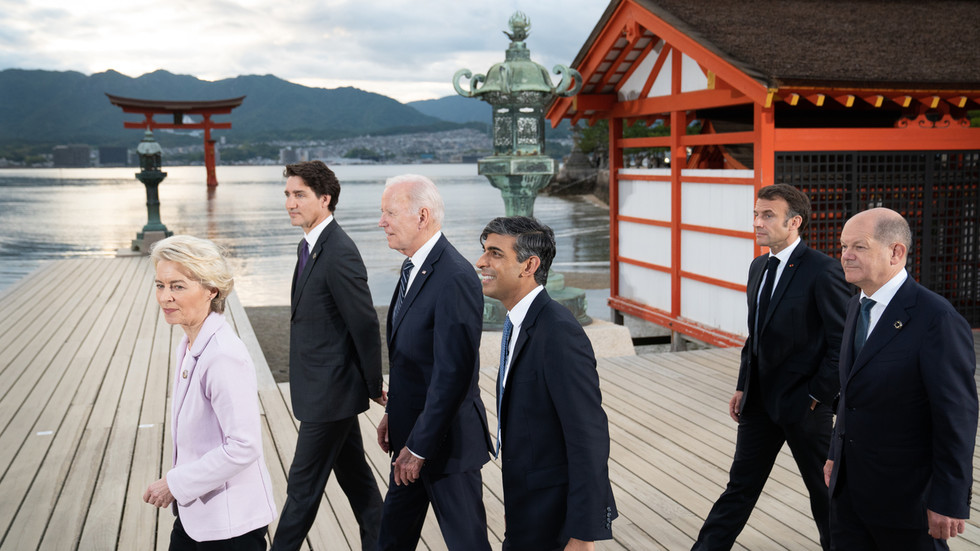
Have emerging powers got the resources to reshape the world order?
By Ivan Timofeev, Valdai Club Programme Director & one of Russia’s leading foreign policy experts.
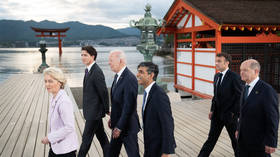
G7 leaders European Commission President Ursula von der Leyen, Canada’s Prime Minister Justin Trudeau, US President Joe Biden, UK Prime Minister Rishi Sunak, French President Emmanuel Macron and German Chancellor Olaf Scholz arrive for the family photo at the Itsukushima Shrine during the G7 Summit. © Stefan Rousseau – Pool / Getty Images
Asynchronous multipolarity: governing parameters and directions of development
Since the late 1990s, multipolarity has been a key focus in Russia’s foreign policy doctrine. A more balance world has been seen as a counterweight to the global hegemony of the US and its allies. Thus, modern international relations were considered to be effectively in transition from unipolarity, with Washington losing its grip on dominance, to a more just and pluralistic system. This new dawn was supposed to rely, on the one hand, on the fundamental role of the UN and, on the other, on the authority and sovereignty of leading great powers, including Russia itself.
The idea of multipolarity has gained traction among many large countries, such as India and China. Even western experts haven’t dismissed the possibility. In a way, it has been slowly morphing into an idealized picture of a future word order.
Meanwhile, a multipolar world is been becoming a reality. We are living in a new system, the rules of which which we do not fully comprehend. If we want to make sense of this reality, we must first have a clear idea of what exactly we mean by the description. The current state of affairs could be described as “asynchronous multipolarity.” As a matter of fact, this transition towards a new world order is happening in different areas of international relations at different speeds. It can’t just begin on a given Monday or Thursday. Some of its elements will be in place before others.
What we are witnessing today is precisely this asynchronous progress. Differences in the pace of change occurring in various parts of the globe result in friction and resistance. To be able to comprehend the transformation, at least to a certain degree, we need to appreciate its governing parameters and dynamics.
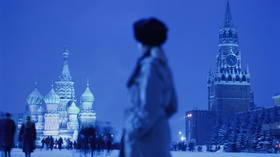
Read more
The concept of polarity in international relations has been used in academia since the late 1970s. It owes its popularity to the theoretical works of American political scientist Kenneth Waltz, a prominent proponent of neorealism in this sphere. This concept was also developed as a structural and systemic theory in the Soviet Union and, later, in modern Russia.
Neorealists argue that states’ actions in the global arena are defined not so much by their interests as they are by the current structure of the world order. It is this form that outlines national interests and strategies. In its turn, it’s defined by the distribution of influence between great powers. Based on this, we can come up with a classification of possible structures of the international system.
It can be unipolar (where a lot of power is concentrated in the hands of one country, with everyone else having limited scope), which happened in the 1990s with American ascendency; bipolar (where there are two powerful peer competitors, with everyone else being relatively weak and other countries grouping around these two centers of power), which we saw during the Cold War; and multipolar (where power is distributed among several major countries or alliances), which is where we are headed today. Larger, medium-sized, and smaller countries will pursue different strategies depending on the structure in place. The multipolar structure results in the greatest strategic variability.
If the world order is defined by the distribution of power, one question that needs to be answered is: what exactly is power? Neorealists originally believed that power boiled down to military capability and a country’s ability to defend itself with military means. If a state had no such capability, an armed conflict or a crisis in its relations with other states could wipe out any other advantages it may have . Therefore, neorealists deliberately removed from the equation factors such as the economy or human capital development.
The case of the USSR later demonstrated that such a narrow understanding of the parameters governing the world order was likely a mistake. The Soviet Union built an impressive military capacity, but collapsed due to an accumulation of economic imbalances and domestic problems. While it is true that any theoretical model has only a limited set of parameters and none can account for all possible factors, the complexity of the modern world means that indicators other than military power need to be taken into account.
At the end of the day, defense capabilities depend on economic and human resources. Of course, there are cases when military capability outstrips resource capacity. In some emergencies, states must punch above their weight and expand their military prowess in spite of limited tools at their disposal. In other cases, the resource base may exceed defensive capability, which means a state has untapped potential for further military expansion. Modern multipolarity should be considered through the lens of this complexity and the asynchronous nature of power in the hands of individual states and across the international system as a whole.
In terms of the distribution of military capability, the world has been multipolar for quite a while. Critics can argue that the US is still ahead of all other states collectively in terms of its military spending, can project its power across the globe, and has the best-trained military armed with the most advanced equipment. At the same time, the US is not at liberty to start a military conflict against a number of countries without running a risk of huge and unacceptable losses. China is rapidly building its armed forces and would be difficult to defeat, even if nuclear weapons were not involved. While it is possible to imagine China suffering a local defeat, its complete destruction is unthinkable. A conflict with Russia would be no walk in the park either, even if all of NATO’s offensive capabilities are deployed. Indeed, this could actually quickly turn into a nuclear exchange.

Read more
If faced with NATO aggression, Moscow would no doubt resort to tactical nukes and would be prepared for further escalation towards the strategic level. Even attacking weaker adversaries such as the North Korea or Iran would be likely to result in significant losses for the US. Pyongyang could well use its nuclear capability even if it risks being completely destroyed by a counterstrike. Iran could be bombed, but an attempt at occupying it like the US did with Iraq would claim too many lives.
This is not to say that there is no incentive for the US to maintain and beef up its war machine. There are a wide range of political objectives it can attain, from ensuring deterrence to conducting local “surgical” operations. However, the US is no longer the global hegemon in the military sense.
Other centers of power are also limited in their ability to achieve goals by military means, especially if their smaller or medium-sized opponents are backed by great powers. The success of a possible military operation by China to solve the Taiwan issue is far from assured due to the balancing role of the US. Massive military and financial aid extended to Kiev by Washington and its allies has complicated Russia’s military operation in Ukraine. Moscow in its turn, provided considerable military assistance to Damascus, in the previous decade, thus effectively blocking attempts by other external players to achieve their goals in the Syrian Civil War.
If we take into account how military power relates to a state’s resource base, the present-day multipolar world will look even more complicated. The US is using a staggering amount of resources to guarantee its defense. The country has access to virtually all key military and dual-use technologies and has a diversified economy. While the conflict in Ukraine has demonstrated industrial limitations in sustaining a large-scale military campaign in the short term, the Americans have enough resources to close this gap. On top of that, the US has considerable human potential, an army of highly skilled workers and engineers, including those “imported” from abroad.
China’s defensive capacity can also rely on a substantial resource base, which allows it to be scaled up significantly, if needed. Even though Beijing lags behind the US in a number of key technology areas, it is catching up rapidly. The Asian giant can boast a developed industrial base, recent strides in engineering, and a large quantity of skilled and disciplined workers.
India’s capabilities are more limited in terms of technology and finances. However, the pace of industrial and technological development, demographic potential and growing human capital will make the country a a crucial player in the future.
There are also some “sleeping” powers, which have taken cover under the American military umbrella, cannot exercise strategic autonomy and have little appetite for accelerated military development. Yet some of these have successfully accumulated considerable industrial, technological, financial, and human resources. Here we are talking about Germany and France, as well as Japan, who could achieve a much greater military capacity if they wanted. The Ukrainian conflict has given them an incentive to start such a buildup, which could be reinforced by industrial and technological cooperation within the EU and NATO and through bilateral alliances with the US.
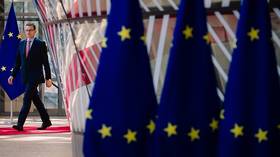
Read more
The Russian case is more complicated. The country has access to abundant natural resources, and it remains one of the world’s top ten economies despite sanctions (being as high as sixth, when measured by purchasing power parity). While Moscow cannot boast a level of technological development on a par with the US, it still has critical military technologies at its disposal, including nuclear, missile, and space capabilities. However, one of the country’s biggest vulnerabilities is its industrial and human potential. Closing the industrial gap would take time and require tremendous willpower and a concentration of resources. In spite of its leadership in natural sciences, the country has an acute shortage of engineers and skilled industrial workers, which is compounded by the brain drain of the early 1990s and the recent wave of emigration in 2022. Low management efficiency and stubbornly high corruption remain a problem.
While it is theoretically possible to “whip the country into shape” by crackdowns and repressions, a Stalin-style modernization would be difficult to imagine under the current conditions, even though some of the Soviet leader’s ideas have ceased to be taboo in recent times. The country simply lacks the necessary demographic resources, ideology, or workforce. Modernization through reckless participation in Western-centric globalization has also been exposed as a dead-end, leading to capital flight and divided loyalties among elites.
If Russia is to preserve its international standing in the long term, it needs a large-scale industrial modernization based on different principles. The existing potential will allow Russia to remain a major military power for the foreseeable future, but the crisis in its relations with the West and the conflict in Ukraine will make things very difficult in the long term sense.
If we consider the ratio between defense capability and resource base, Poland and Ukraine are remarkable examples. Warsaw is currently conducting a rapid military buildup, clearly ahead of the other European NATO members. The question is, for how long can the country sustain this rate by relying on its own capacity? Ukraine today is a military camp united by a radical nationalist mobilization and largely supported from abroad. The level of militarization in the country by far exceeds its own capacity, while its human and industrial potential is undermined by both emigration and the fighting.
What makes the current world order so complicated is the fact that military capability is not the only weapon at the disposal of nation states. This is where the asynchronous nature of the global system manifests itself with the greatest clarity. While the world has been multipolar in the military sense for quite a while, the distribution of capacities in some other areas tells a different story.
In global finance, the dominant role of American banks and the US dollar as a means of payment and a reserve currency remains strong. Admittedly, the policy of sweeping financial and economic sanctions against Russia has triggered a push towards diversifying means of settlements, and Moscow has had no choice but to lead this effort. Decoupling from western currencies is a matter of survival for our country right now.
At present, the US and the EU have left a narrow window for transactions in dollars and euro with Russia. However, this opening – in the form of a handful of banks not yet sanctioned – may be shut at any moment.
Of course, the embargoes against Russia are making everyone else think: What if they find themselves in the same situation tomorrow?
China has long been quietly preparing its financial system for a geopolitical shock scenario. In this area, it can learn quite a lot from Russia, where the central bank and the Ministry of Finance had done a lot of work to establish an autonomous financial system even before the military operation began.
Still, there is no revolution in global finance in sight. The “global majority,” including China and India, are still relying on the dollar and time-tested methods for financial transactions. While the world has been militarily multipolar for a long time, the US still dominates global finances. The West’s global technological footprint also remains formidable. In spite of China’s major leap in this area, western licenses, knowhow, critical components, and finished products are still integral to global supply chains. Given crushing export controls, Russia is being forced to lead the effort of abandoning these as well, yet the “global majority” remains in no hurry to give up on them.
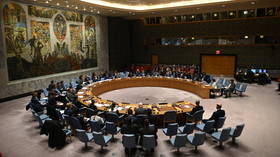
Read more
The digital space is another area of competition. Western big tech has carved out key hubs in global digital service networks. As the conflict in Ukraine has shown, digital services can be used to achieve political aims. Russia’s focus on using its own platforms is reasonable and inevitable. Meanwhile, China moved away from these much earlier and developed its own digital ecosystem. Both Russia and China could become exporters of “digital sovereignty” by offering their technology to third countries that would like to diversify. Western digital titans will keep their crucial nodes, but the global digital network itself now has huge holes, in the form of these two powerful players.
Last but not least, we should consider the impact of information and “soft power.” While the western media long ago lost its monopoly in the global market, its sway remains important. It is difficult to evaluate the effect “soft power” but what is obvious is that the infrastructure for influencing people’s minds, from education systems to exchange programs, university rankings, publication databases, and so on, is still going strong. English continues to be the language of international communication, while western mass culture maintains its global reach despite some local pushback. In Russia, the conflict with the West has not resulted in the denunciation of what is essentially a “western” lifestyle, which, incidentally, is not limited to a unified set of characteristics and, even within one country (like the US), may vary from unabashed liberalism to hardline conservatism.
To summarize, what we are seeing today is an extremely complex world. From the military perspective, the the globe has been multipolar for a long time. Key centers of power have different resource capacities for maintaining and expanding their military capabilities. Russia will need to overcome significant modernization challenges in this sphere. At the same time, multipolarity in the security sector is not always aligned with other capabilities of states. Global finance and supply chains are still largely dominated by the West. In the area of digital infrastructure, new poles are emerging, or, at least, major players such as Russia and China are decoupling from the Western-centric global digital ecosystem and may soon begin to export their “digital sovereignty” services. The West is still powerful in the information and “soft power” space, although it would hardly be possible to describe the situation here as unipolarity given the complexity of factors and their tenuous relation to real politics.
The asynchronous nature of the distribution of power factors is an important characteristic of the current world order. Any analysis of multipolarity needs to take this fact into account.




